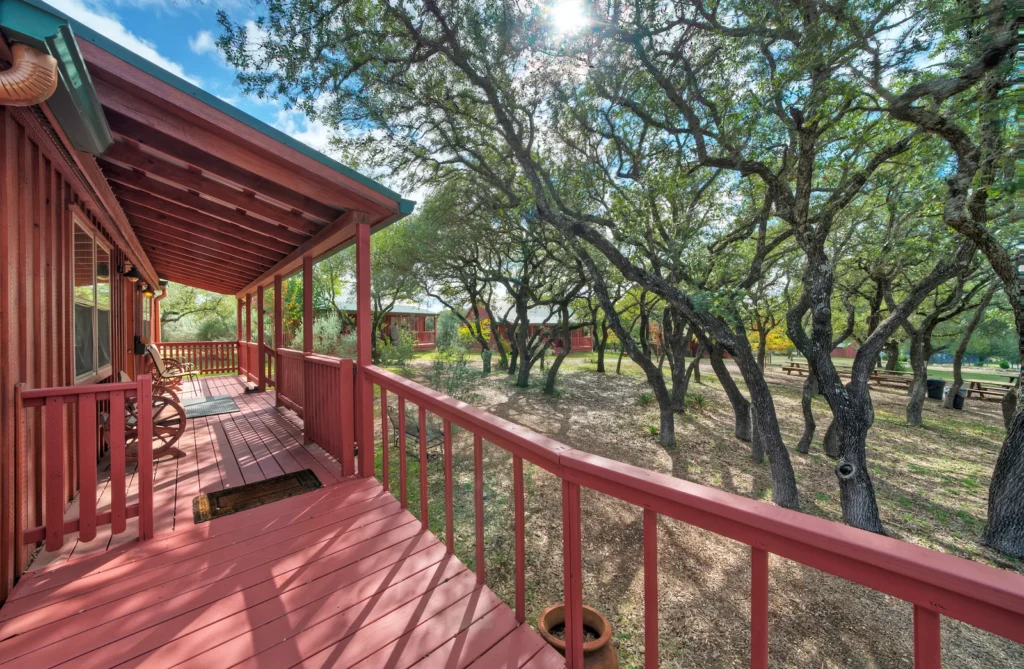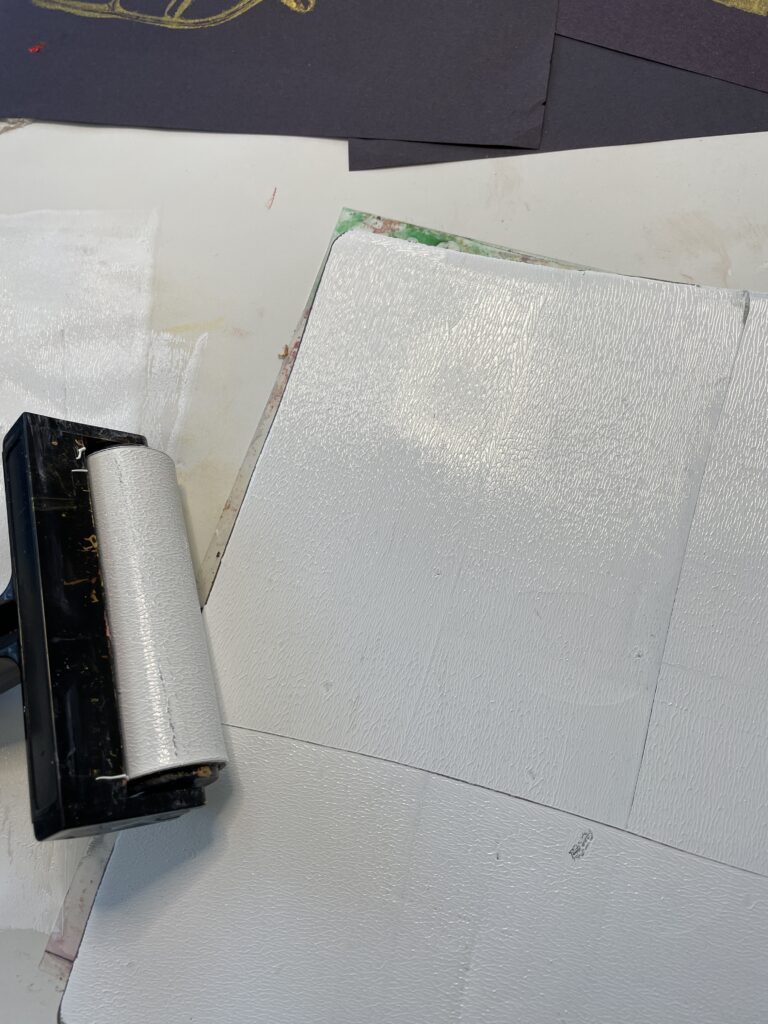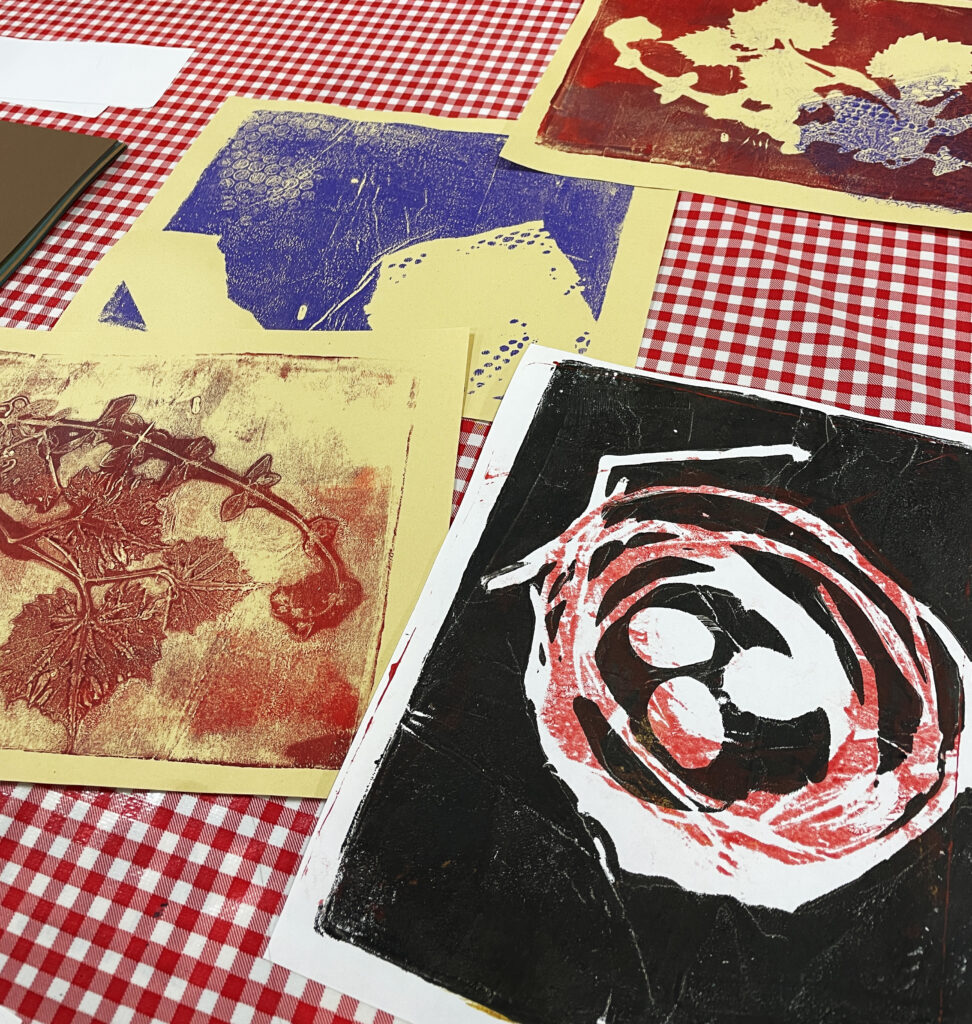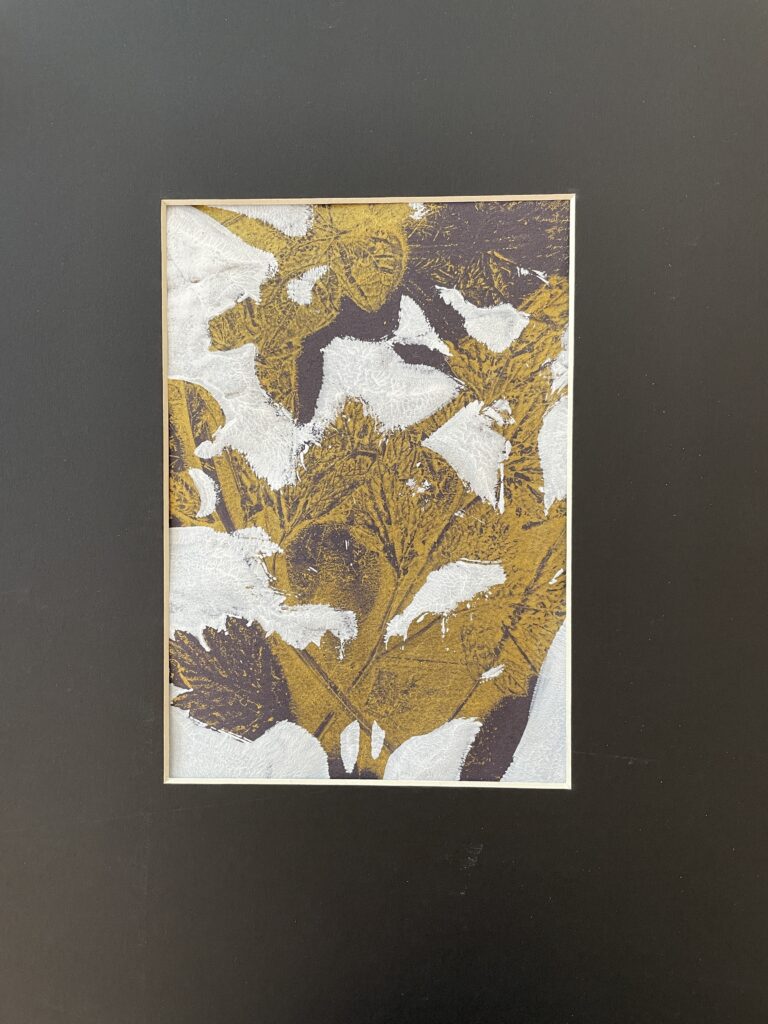The small towns and two-lane roads fanning out north of San Antonio and westward from Austin make up the heart of the Texas Hill Country. There, you will find rivers that wind through an abundance of bald cypress trees, shimmering lakes cupped in limestone canyons, and rustic German towns with unique names. One of our favorite places to stay is called Hillside Acres near Dripping Springs where we just spent a weekend with 15 inter-generational family members.


I am the Designated Art & Crafts teacher on these trips, and this time I decided to being along Gelli plates for some printmaking lessons using the camp’s abundant natural leaves and grasses. I reminded the campers that we needed just a few interesting samples, and then laid out the guidelines:
- Only gather plant samples where it’s permitted and ensure to minimize any negative impact on the environment. Preserve the beauty and balance of nature.
- Take only what you need and avoid harming the plants or their surroundings. Sustainable harvesting ensures the ecosystem remains healthy and diverse.
- Aim to collect a wide range of plant species to expand your artistic palette. Experimenting with different textures, shapes, and sizes can lead to unique and interesting prints.
- Clean up after yourself and leave the gathering area as you found it, or even better. Take pride in being responsible stewards of the environment and setting a positive example for others.
We spread the plant samples out on newspapers in the spacious Gathering Room. Sharing was encouraged.

First, we made Chapbooks to hold our favorite prints (there is a free workshop on my Teachable site showing you how to to this).

Then we created two-layer gelli prints based on positive and negative space around the plant samples.










We got lots of interesting results from all kinds of plants:





Everyone loved making “birds’ nest” prints from grasses and cut paper egg shapes:

Some of the Weekend Camp Artists used their prints on their chapbooks as covers, and some wanted to frame theirs.

You don’t need any experience to make really interesting, artful, designs using gelli plates and natural materials. Keep this in mind of you are looking for a fun activity for a family trip, especially if you are going where natural materials are widely available. It’s a good way to study the characteristics of different leaves and flowers and to preserve them as one-of-a-kind monoprints.
If you’ve never used a gelli plate before, the website called Gelli Arts has lots of information, including tutorials and lessons plans as well as materials lists and how-to’s (I have no connection with them other than enjoying the process).
I hope you are able to enjoy a nice get-away this spring with friends of family that includes some art! Now, back to the studio . . . .
